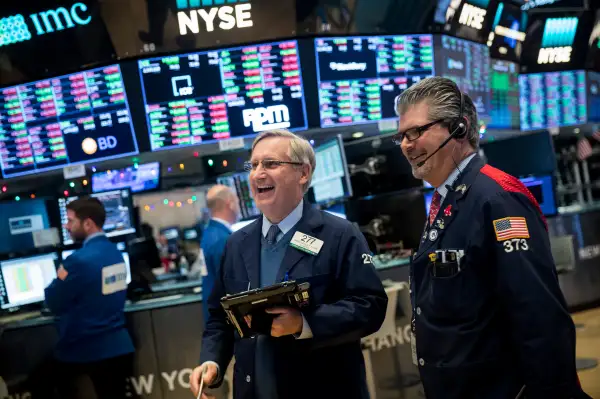This Stock Indicator Is Right 84% of the Time. Now It Says the Market Will Keep Climbing All Year
Money is not a client of any investment adviser featured on this page. The information provided on this page is for educational purposes only and is not intended as investment advice. Money does not offer advisory services.

After the first five trading days of the year, U.S. stocks are up nearly 3%.
Why is that important?
Because history says that if equities post a gain in the first five trading days of the year, there's a very good chance that the stock market will continue to rise for the whole year.
In fact, the so-called "first five day" barometer has been correct around 84% of the time since 1950, according to The Stock Trader's Almanac.
Why These Five Days Matter
While no one knows for sure why the first five days matter, market watchers have their guesses. "It’s the first month of the year. It's when everyone makes their assessment of the year to come, so it's a reflection of how investors are likely to behave for the year," says Jeffrey Hirsch, editor of the almanac, a book that keeps track of key data points about the market.
Typically, many investors have new money to put to work at the start of the year — either from a year-end bonus or the proceeds of tax-loss selling from the prior year.
And if investors are confident enough to put that to work immediately — thus driving up stock prices — that's a sign of how bullish investors truly are.
Why You Should Look at Other January Market Indicators Too
To be sure, some investors downplay the significance of the first five trading days, partly because it's such a short period of time. Also, some critics point out that when stocks lose ground at the start of the year, the first five days aren't very good at predicting the direction of the market going forward.
That's why investors prefer using the "January barometer", which says that as stocks go for the full month of January, so goes the market for the rest of the year.
But here's the thing: Even if you don't think you can read the tea leaves of the market based on the first five trading days, you can use it in conjunction with other traditional indicators.
One of those other indicators is the full January barometer and the other is the so-called Santa Claus Rally, which looks at how the stock market performs in the seven-day period that spans the final five trading days of the prior year plus the first two trading days of the new year.
Historically, bear markets and stock downturns are expected if Santa doesn't visit the stock market during this period and equities lose value in this seven-day stretch, as was the case in 2008 and 2000.
This time around, the Santa Claus rally delivered, with the market up more than 1% during this period.
Will There Be an Indicator Trifecta in January?
In years when the Santa Claus rally materializes and stocks are up in the first five trading days and stocks post gains in the full month of January, the market almost assuredly rises in that year.
In the 29 years since 1950 in which all three indicators were up, the stock market lost ground only twice, for a success rate of more than 93%.
"When all three January Indicators – the Santa Claus Rally, First Five Days and the full-month January Barometer – are all positive we hit the trifecta," Hirsch says.
That means it's time to cross your fingers for a strong run for stocks for the remainder of this month.
